Deck aircraft. Part 2, USSR / Russia
In 1974, the aircraft began mass production. 11 August 1977, the aircraft was adopted by the Navy under the designation Yak-38. For vertical take-off and landing, a lift-march and two lifting engines were used. The main propulsion engine is located in the middle part of the fuselage, it has single-side air intakes with boundary layer separation and an unregulated nozzle with 2 rotary nozzles. Lifting engines are located one after the other in front of the fuselage. Their air intakes and jet nozzles are closed by controlled flaps. To prevent hot gases from entering the air intakes, reflective fins are installed at the top and bottom of the fuselage. The fuel reserve is located in the 2 internal caisson tanks.
On the Yak-38M suspension is provided under the wing 2 PTB for 500 l. The cockpit is equipped with a forced ejection system SK-3М (it has no analogues in the world) with the K-36ВМ seat (on the aircraft of the first releases of the QW-1М). Flight navigation equipment provides the performance of combat missions day and night in simple and complex meteorological conditions. The armament consists of: UR type P-60 (P-60М) and X-23 (X-23МР), blocks UB-32А, UB-32М, UB-16-57UMP with C-5, B-8М1, missiles C-8, C-24B unguided missiles, free-fall bombs in caliber up to 250 kg, one-time bomb cartridges, incendiary tanks, UPK-23-250 cannon containers.
In total, 1974-1989 made 231 aircraft Yak-38 various modifications. The aircraft was based on the aircraft-carrying cruisers of the 1143 project ("Kiev", "Minsk", "Novorossiysk", "Baku"). If necessary, dry cargo and container ships with a specially equipped platform 20X20 m on the deck could be used for basing. In the spring of 1980, the 4 Yak-38, as part of Operation Rhombus, took part in the hostilities in Afghanistan. In general, the aircraft was unsuccessful, the interest of the sailors to the Yak-38 was short-lived. The aircraft had a weak thrust-capacity, in southern latitudes at high temperatures and humidity, it often had problems with take-off and had an extremely small radius of action. Yak-38 quickly became the leader of the Soviet naval aviation in terms of the number of accidents, although there were not many victims thanks to the automatic ejection system.
The century of this aircraft, in contrast to its western counterpart, the VTOL Harrier, was short. With the collapse of the USSR in 1991, the Yak-38 was taken to the reserve, and the following year was removed from service. The aircraft that did not work out were transferred to the storage base, and later “utilized”. Following this, three pretty new ships of the Ave. 1143 were sold abroad for the price of scrap metal.
"Admiral Gorshkov" (formerly "Baku") was sold to India and is being modernized in Severodvinsk
Given the shortcomings of the Yak-38, in the middle of the 70-s began designing a new aircraft of vertical takeoff and landing. After adjusting the requirements of the military, the aircraft, called Yak-41M during the design was optimized for vertical takeoff and supersonic flight. He is able to perform a vertical takeoff with a full load. For this purpose, afterburner mode of operation of the engines. The combined triplex digital electric remote control system of the aircraft and the power plant associates the deviation of the all-rotary stabilizer with the operating mode of the lifting and main-landing engines. The system controls the deflection of the nozzles of all three engines. Lifting engines can operate up to a height of 2500 meters with a flight speed of no more than 550 km / h.
Fuel supply using outboard fuel tanks can be increased by 1750kg. It is possible to install a suspended conformal fuel tank. A multi-function electronic indicator (display) and an indicator on the cab windshield are included in the display system.
The sighting system has an onboard computer, around which the following are grouped: an onboard radar station M002 (C-41), a fire control system, a helmet-mounted target designation system and a laser-television guidance system. Flight-navigation system allows you to determine the coordinates of the location of the aircraft in flight from both ground (ship) radio systems and satellite navigation systems. The complex has systems for remote and trajectory control of the aircraft, autonomous navigation computer, etc.
Built-in rifle armament is a high-performance 301 mm GS-30 cannon with 120 ammunition of various types of shells, ensuring the defeat of airborne and ground (surface) lightly armored targets.
The maximum combat load of the Yak-41M is 260kg and is placed on the external suspension on four pylons under the wing.
Weapon variants are formed depending on the nature of the targets being targeted and are divided into three main groups: air-to-air (UR P-27P P-27T, P-77, P-73), air-to-sea (UR X-31А) and air-to-surface (UR X-25MP, X-31P.X-35). Uncontrolled missile weapons (C-8 and C-13 in blocks, C-24) and bombing (FAB, small cargo containers - KM GU). In 1985, the first prototype of the Yak-41M was built.
The first flight on the Yak-41M during takeoff and landing "in an airplane" was made by test pilot A.A. Sinitsyn 9 March 1987 of the year. However, in the timeframe (in 1988 year), it was not possible to submit the aircraft to state trials. When adjusting the timing of the tests, the designation of the aircraft was changed; Yak-141.
The active testing phase of the Yak-41M aircraft under ship conditions began in September 1991. During the tests, during the execution of landing, one copy, the aircraft was lost. Fortunately, the pilot successfully ejected. The Yak-141 aircraft after the end of the test was first publicly presented on September 6-13 on the 1992 at the Farnborough Air Show, and later was repeatedly shown at other air shows.
The Yak-141 has the following advantages over the Yak-38:
• take-off without taxiing out on the runway directly from the shelter along the exit taxiway with the provision of mass deployment of the Yak-141 unit into combat;
• aircraft operation from damaged airfields;
• dispersal of aircraft on a large number of small areas with increased survivability and stealth basing;
• 4-5 times reduction in the takeoff time of the Yak-141 aircraft unit from readiness position 1 compared to a conventional takeoff unit;
• concentration of a group of fighter aircraft to intercept air targets in threatened directions, regardless of the presence of a developed airfield network there;
• conducting close maneuverable combat, delivering strikes against ground and surface targets;
• short response time to ground forces due to short flight time and simultaneous take-off of a large number of aircraft from dispersed sites located near the front line; basing both on the aircraft-carrying ships of the Navy and on the ships of the sea fleethaving no developed flight deck, as well as on limited take-off and landing areas and road sections.
In connection with the collapse of the USSR, this aircraft, which was ahead of its time, was not so put into mass production.
On the basis of the 1143 project at the beginning of the 80-x, the construction of an aircraft-carrying cruiser was launched in the USSR, with horizontal take-off and landing aircraft. The fifth heavy aircraft carrying cruiser of the USSR, the Riga of the 11435 project, was laid on the slipway of the Black Sea Shipyard 1 of September 1982 of the year.
For the first time, he was distinguished from his predecessors by the possibility of taking off and landing traditional planes on him, modified variants of ground Su-27, MiG-29 and Su-25. For this, he had a significantly increased flight deck and a springboard for taking off aircraft. Even before the end of the assembly, after the death of Leonid Brezhnev, 22 November 1982, the cruiser was renamed in his honor in "Leonid Brezhnev". Launched on December 4 1985 of the year, after which it was completed afloat. 11 August 1987 was renamed "Tbilisi". 8 June 1989 began his mooring trials, and 8 September 1989 of the year - the settlement of the crew. October 21 1989 of the unfinished and incomplete ship was launched into the sea, where he conducted a series of flight tests of the aircraft intended for basing on board. November 9, 1 made the first landings of the MiG-1989K, Su-29K and Su-27UTG. The first take-off from it was made by the MiG-25K on the same day and the Su-29UTG and the Su-25K the next day, 27 November 2 of the year. After completing the 1989 test cycle in November, 23 returned to the factory for completion. October 1989 4 was renamed again (1990) and became known as "Admiral of the Fleet of the Soviet Union Kuznetsov". Commissioned20 January 1991.
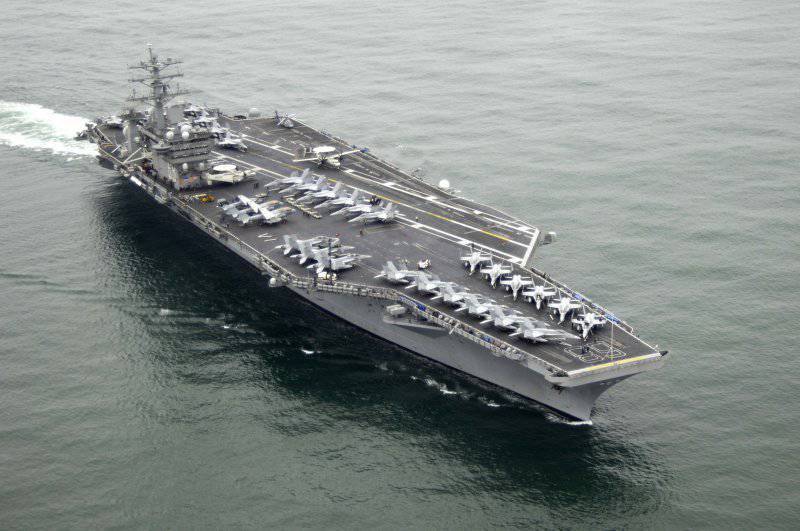
According to the project, the ship should have been based: 50 airplanes and 26 MiG-29K or Su-27K, 4 Ka-27RLD, 18 Ka-27 or Ka-29, 2 Ka-27PS helicopters. Actually: 10 Su-33, 2 Su-25UTG.
Fighter Su-33, according to the 18 decree of April 1984, was to be developed on the basis of the fourth-generation heavy fighter Su-27, which had already been tested and launched into mass production. Su-33 had to retain all the advantages and design-layout solutions of the Su-27 base fighter.
Serial production of the Su-33 began in 1989 at KnAAPO. In connection with the collapse of the USSR and the subsequent economic crisis, the mass production of deck fighters Su-33, one might say, did not take place - the entire 26 serial fighter was built.
Fighter Su-33 created by the normal aerodynamic configuration using the front horizontal tail and has an integral layout. The trapezoidal wing, which has developed nodules and smoothly mates with the fuselage, forms a single bearing body. twin-turbojet engines with afterburner chambers are located in separated nacelles, which reduces their mutual influence. Engine air intakes are located under the center section. The forward horizontal tail is installed in the wing inflows and increases both the maneuverability characteristics of the aircraft and the lift of the airframe, which is very important for the deck fighter. The power plant of the aircraft consists of two double-circuit turbojet engines with afterburner chambers AL-31F. The aircraft’s armament is subdivided into a cannon and a missile. The gun-gun armament is represented by the built-in automatic rapid-fire single-barreled gun of the 30 caliber mm GSH-301 type mounted in the right wing half-wing with the 150 ammunition ammunition. The aircraft can be suspended up to X-NUMX medium-range P-8 air-to-air missiles with semi-active radar (P-27P) or thermal (P-27T) homing heads, as well as their modifications with an increased range (P-27EP , P-27ET) and up to 27 guided missiles of maneuvering combat with thermal homing heads of the P-6 type. A typical aircraft armament consists of X-NUMX P-73E and 8 R-27 missiles.
Flight characteristics
Maximum speed: at height: 2300 km / h (2,17 M) at the ground: 1300 km / h (1,09 M)
Landing speed: 235 — 250 km / h
Flight distance: at the ground: 1000 km at an altitude: 3000 km
Duration of patrols at a distance of 250 km: 2 h.
Service ceiling: 17000 m
Load on wing: at normal take-off mass; with
partial dressing: 383 kg / m²
with full dressing: 441 kg / m² at maximum take-off
weight: 486 kg / m²
Thrust at the afterburner:
during normal take-off mass: partially charged: 0,96; with
full dressing: 0,84
with maximum take-off weight: 0,76
Takeoff run: 105m. (with springboard) Run length: 90 m (with arresting gear)
Maximum operating overload: 8,5 g
MiG-29K It was developed for the acquisition of a mixed group of naval aviation. In the group of carrier-based aviation, the role of a multi-purpose vehicle was assigned to 29 (similar to the American F / A-18): both the attack aircraft and the aircraft gaining air superiority at short distances were also supposed to be used as a reconnaissance aircraft.
The development of the concept of the aircraft began with the 1978 year, and the direct design of the machine began in the 1984 year. From the "land" MiG-29 differed complex equipment necessary for basing on the ship, a reinforced chassis and a folding wing.
The landing on the deck of the aircraft-carrying cruiser and the first take-off from it. The MiG-29K made 1 on November 1989 of the year under control of Toktar Aubakirov. Due to economic difficulties, the MiG-29K project was closed, but it was proactively promoted by the KB for its money. Now this machine is equipped similarly to the MiG-29М2 (MiG-35). Compared to the original version, wing mechanization has been improved to improve takeoff and landing characteristics, fuel capacity has been increased, an air refueling system has been installed, armament weight has been increased, aircraft’s visibility in the radar range has been reduced, and a multifunctional Doppler radar airborne radar has been installed on the aircraft -ME ", engines RD-33MK, new EDSU with fourfold redundancy, avionics of standard MIL-STD-1553B with open architecture.
MiG-29K can be based on aircraft-carrying ships capable of receiving airplanes weighing more than 20 tons, equipped with a take-off springboard and landing arresting gear, as well as at ground aerodromes. The aircraft are armed with guided missiles RVV-AE and R-73E for air combat; anti-ship missiles X-31A and X-35; X-31P anti-radar missiles and KAB-500Kr corrected bombs to destroy ground and surface targets.
Maximum speed: at height: 2300 km / h (M = 2,17); near the ground: 1400 km / h (M = 1,17)
Ferrying range: high altitude: without PTB: 2000 km; with 3 PTB: 3000 km
with 5 PTB and one refueling: 6500 km
Combat radius: Without PTB: 850 km. From 1 PTB: 1050 km. From 3 PTB: 1300 km
Service ceiling: 17500 m
Rate of climb: 18000 m / min
Takeoff run: 110 — 195 m (with springboard)
Mileage: 90 — 150 m (with arresting equipment)
Maximum operating overload: + 8,5 g
Wing load: with normal take-off weight: 423 kg / m²
with maximum take-off weight: 533 kg / m²
Thrust: at maximum take-off weight: 0,84.
normal take-off weight: 1,06 with 3000
fuels (2300kg) and 4ХР-77.
Armament: Cannon: 30-mm aviation gun GSH-30-1, 150 ammunition
Combat load: 4500 kg. Suspension points: 8.
Modern deck-based MiGs are multifunctional all-weather generation machines "4 ++". Their task is to air defense and anti-ship defense of the connection of ships, striking attacks on ground targets of the enemy. It was decided to replace the outdated Su-33 with the MiG-29K of the 9-41 modification. They will also be armed with an air wing on the former Admiral Gorshkov. Which was upgraded and refurbished in Severodvinsk for the Indian Navy, where it was named Vikramaditya.
As a training, to save the resource of combat vehicles on the "Kuznetsov" used a couple Sioux 25UTG- on the basis of a combat training double attack aircraft Su-25UB.
Differs from it in the absence of sighting equipment, control system units weapons, a cannon installation with a cannon, girder holders and pylons, armored screens for engines, radio communication stations with ground forces, blocks and elements of the defense system.
After the termination of the program of deck aircraft DRLO Yak-44 and An-71, a helicopter was adopted to ensure the radar patrol and reconnaissance Ka-31.
The development of the Ka-31 helicopter OKB Kamov began in 1985 year. The basis was taken glider and power plant of the Ka-29. The first flight of the Ka-31 took place in the 1987 year. The helicopter was adopted by the Russian Navy in 1995 year. Serial production was established at the helicopter plant in Kumertau (KumAPP). It is planned that with 2013, the Ka-31 will begin to enter service with the Northern Fleet of the Russian Navy.
The main element of the design is a radar with a rotating antenna length 5.75 m and area 6m2. The antenna is installed under the fuselage and is adjacent to its lower part in the folded position. When operating, the antenna opens to 90 ° down, while the landing gear supports are pressed against the fuselage so as not to interfere with the rotation of the antenna. Antenna full revolution time 10 seconds Radar provides simultaneous detection and tracking of up to 20 targets. The detection range is: for aircraft 100 — 150 km, for surface ships 250 — 285 km. Duration of patrolling 2.5ч when flying at altitude 3500 m.
Ka-27 - ship multipurpose helicopter. Based on the base multipurpose vehicle, two major modifications were developed for the Navy - the Ka-27 anti-submarine helicopter and the Ka-27PS search and rescue helicopter.
Ka-27 (according to NATO classification - "Helix-A") is designed to detect, track and destroy submarines, following at a depth of 500 m at speeds up to 75 km / h in search areas remote from the home-based ship to 200 km during rough sea sea to 5 points day and night in simple and difficult weather conditions. A helicopter can perform tactical tasks both individually and as part of a group.
and in conjunction with ships in all geographic latitudes.
Serial production was launched in 1977 at a helicopter plant in Kumertau. For various reasons, the tests and fine-tuning of the helicopter spanned 9 years, and the helicopter adopted 14 April 1981.
Anti-submarine torpedoes АТ-1МВ, АПР-23 missiles and bombs weighing up to 250 kg can be used to destroy submarines.
On the cassette holder KD-2-323, mounted on the right side of the fuselage, the landmark OMAB bombs, day or night, are suspended.
The Ka-27PS naval rescue helicopter is designed to rescue or assist crews of ships and aircraft in distress, the PS version is the most demanded for a simple reason — the helicopter is primarily used as a vehicle on ships and coastal bases.
Currently, the Ka-27 continues to serve on the Admiral Kuznetsov TAKR. Each helicopter is armed with destroyers, two large anti-submarine ships (BOD of the 1155 project), two each (missile cruisers of the 1144 project).
Ka-29 (according to the NATO classification: Helix-B, - English Spiral-B) - a naval transport helicopter helicopter, further development of the Ka-27 helicopter.
The Ka-29 helicopter is produced in two main versions: transport and combat, and is intended for landing marines from the ships, carrying cargo, military equipment in a suspended state, as well as fire support of the marine infantry, destruction of the enemy’s manpower. It can be used for medical evacuation, transfer of personnel, cargo from the mother ship and supply vessels to warships. The Ka-29 helicopters were based on the landing craft of the 1174 project. In the transport version, the helicopter is able to take on board the 16 paratroopers with personal weapons, or 10 wounded, including four on stretchers, or up to 2000 kg of cargo in the transport cabin, or up to 4000 kg of cargo on the external suspension. The helicopter can be installed winch capacity up to 300 kg.
Armament: 9A622 7,62 mm mobile machine gun mount with 1800 ammunition or 30-mm ammunition. gun, 6-- ATGM "Storm".
In the future, with the entry into service of universal amphibious ships of the Mistral type, it is planned to base helicopters of domestic production on them. Including drums Ka-52K.
The ship modification of the vehicle, which received the name Ka-52K, should be assembled, tested and tested by the middle of 2014. Just by that time, the first copies of Mistral will arrive at the Pacific Fleet. It is planned that for each Mistral X-NUMX Ka-8K and 52 helicopters will be equipped with Ka-8 combat vehicles.
Sources:
http://ru.wikipedia.org/wiki/Военно-Морской_Флот_Российской_Федерации
http://www.navy.su/navyavia-osn.htm
ru.wikipedia.org/wiki/%D1%F3-33
http://www.arms.ru/air/su33.htm
http://nvo.ng.ru/concepts/2007-08-10/4_power.html
http://www.airwar.ru/enc/sh/ka27.html
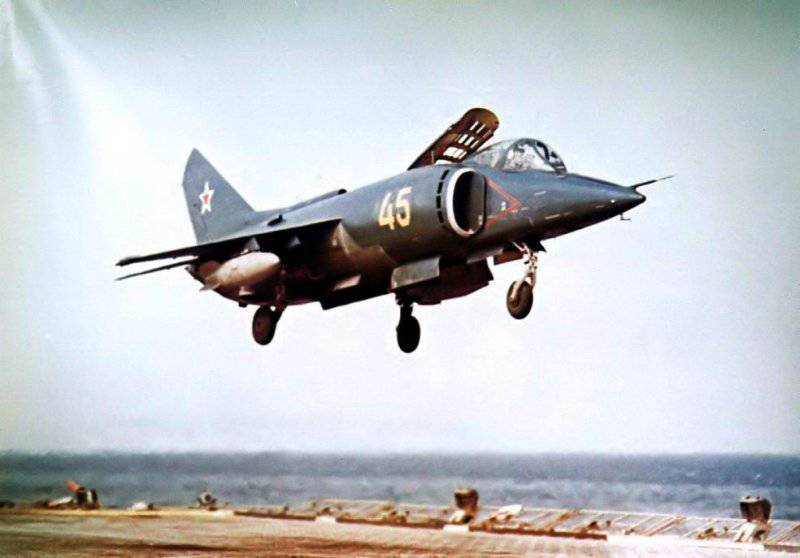
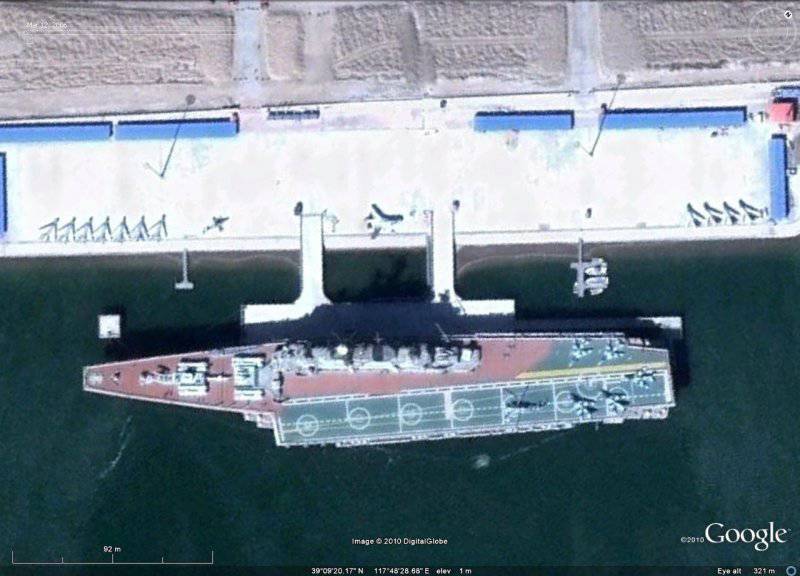
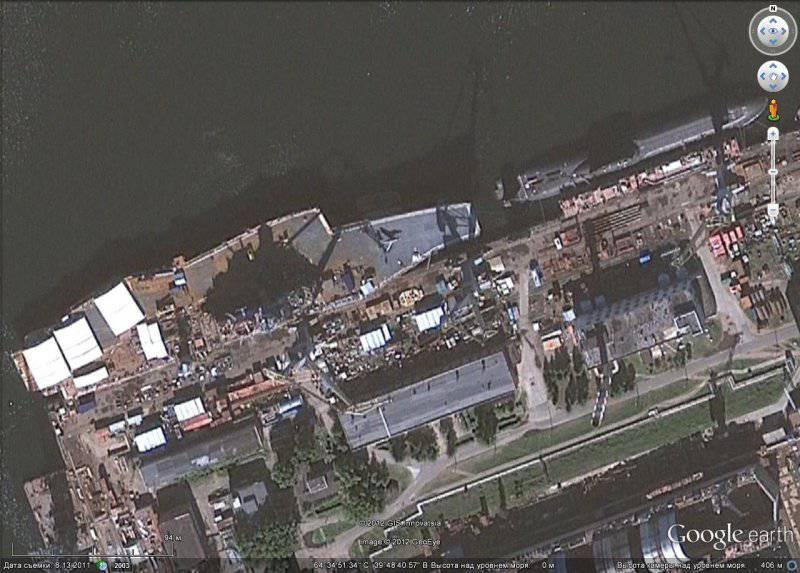
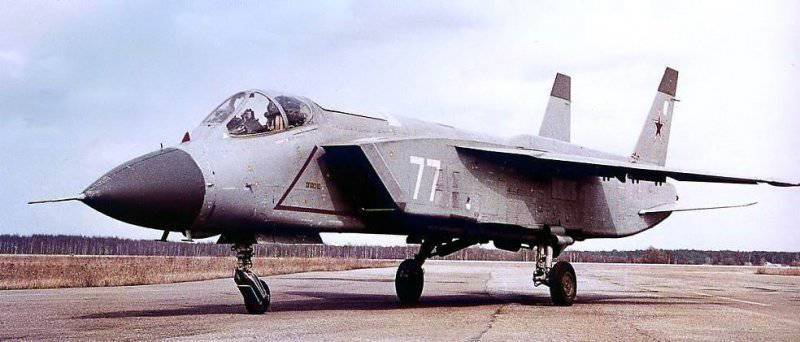
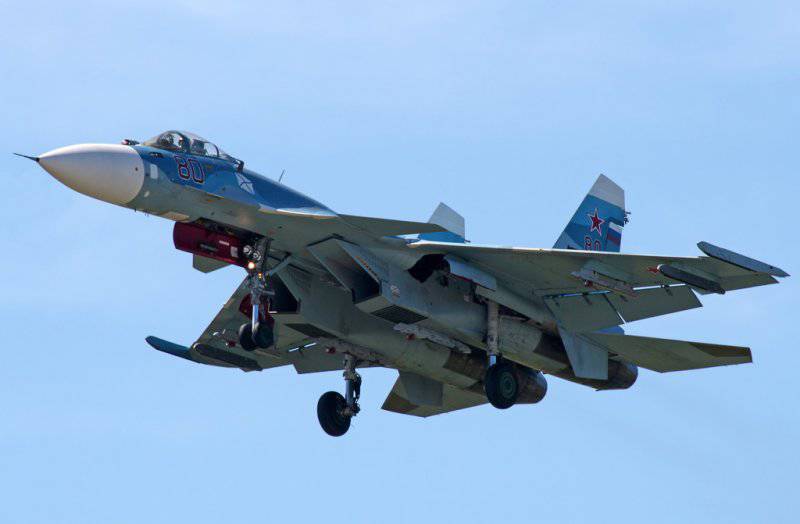
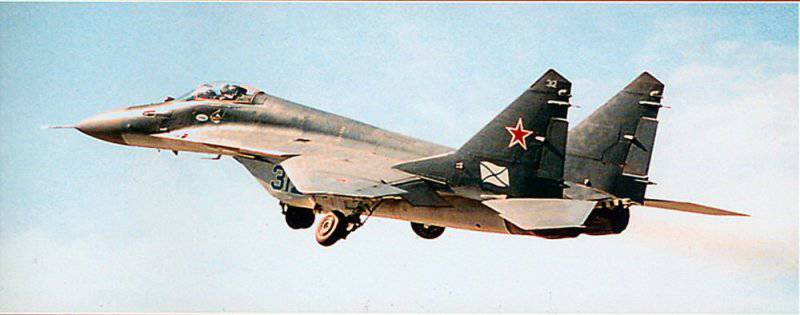
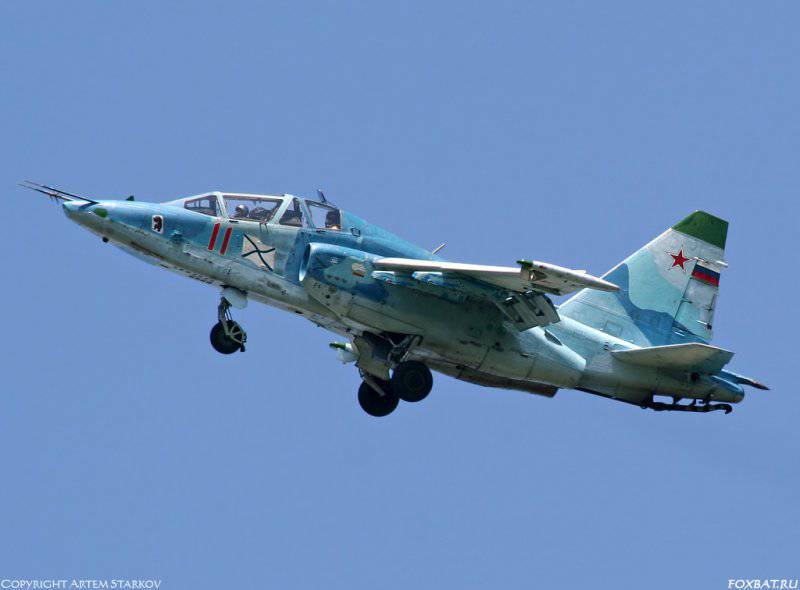
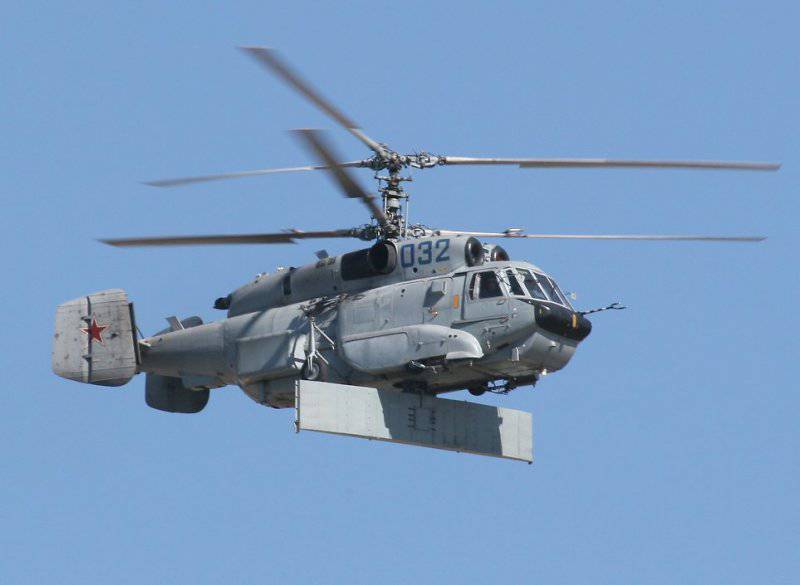
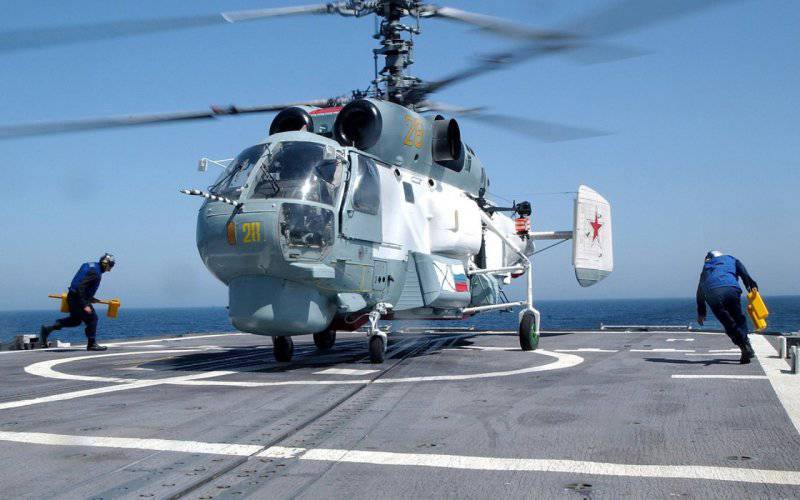
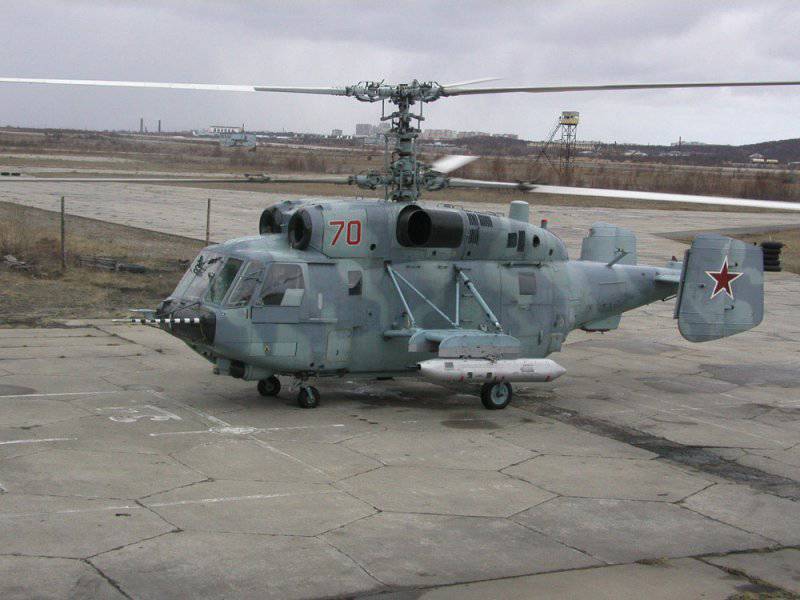
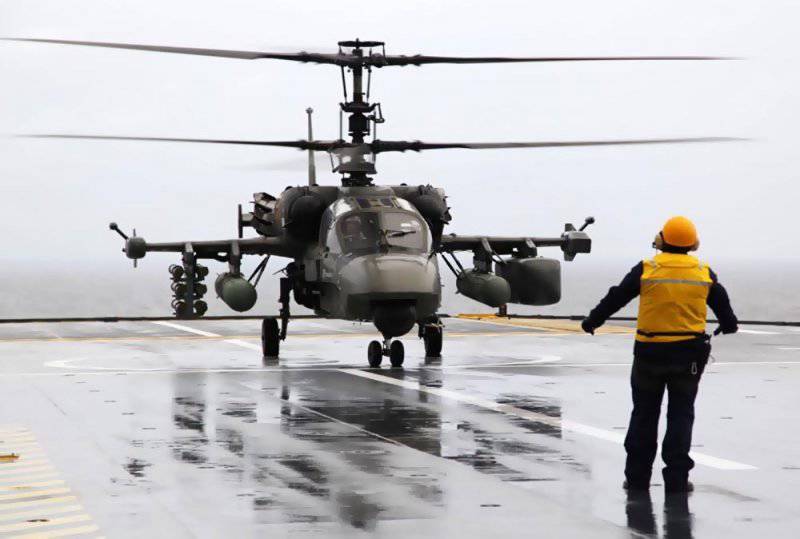
Information